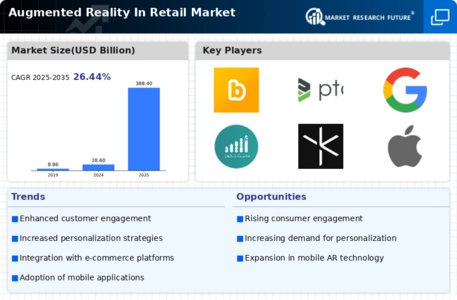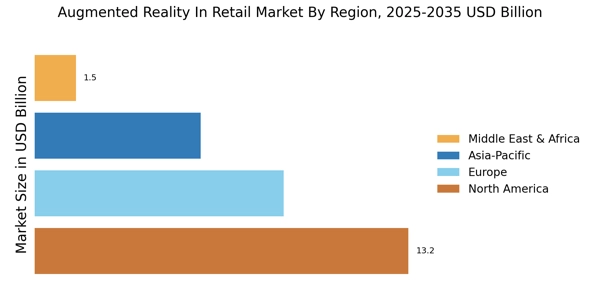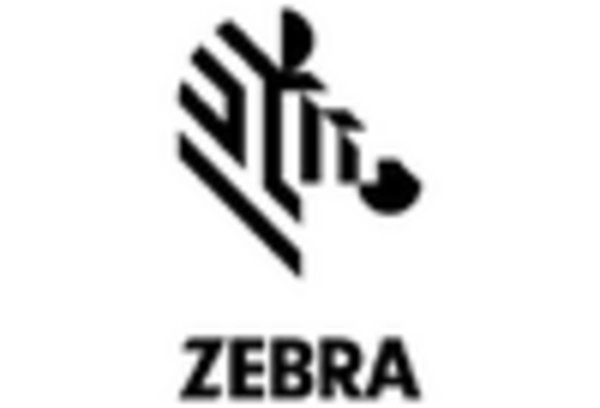The Augmented Reality (AR) in Retail Market is currently characterized by a dynamic competitive landscape, driven by rapid technological advancements and evolving consumer expectations. Key players such as Microsoft (US), Apple (US), and Google (US) are at the forefront, leveraging their substantial resources to innovate and enhance customer experiences. Microsoft (US) focuses on integrating AR into its existing platforms, particularly through its HoloLens technology, which aims to revolutionize in-store experiences. Apple (US), on the other hand, emphasizes seamless integration of AR into its ecosystem, enhancing its retail applications to provide immersive shopping experiences. Google (US) continues to invest in AR through its Google Lens and ARCore initiatives, aiming to facilitate interactive shopping experiences that blend the digital and physical realms. Collectively, these strategies not only enhance customer engagement but also intensify competition within the market, as companies strive to differentiate themselves through innovative solutions.
The business tactics employed by these companies reflect a keen awareness of the need for localized strategies and supply chain optimization. The market appears moderately fragmented, with a mix of established players and emerging startups vying for market share. This competitive structure allows for diverse offerings, yet the influence of major players like Microsoft (US) and Apple (US) remains pronounced, as they set benchmarks for technological advancements and customer engagement strategies.
In August 2025, Microsoft (US) announced a partnership with a leading retail chain to implement its HoloLens technology in stores, aiming to enhance customer interaction through virtual try-ons and product demonstrations. This strategic move underscores Microsoft's commitment to positioning itself as a leader in AR solutions for retail, potentially reshaping how consumers interact with products in physical spaces. The partnership is likely to drive increased foot traffic and sales, as customers experience products in a more engaging manner.
In September 2025, Apple (US) unveiled a new AR feature within its Apple Store app, allowing users to visualize products in their own environments before making a purchase. This initiative not only enhances the shopping experience but also aligns with Apple's broader strategy of integrating AR across its product lines. By enabling customers to interact with products virtually, Apple (US) strengthens its brand loyalty and encourages higher conversion rates, reflecting a shift towards experiential retail.
In July 2025, Google (US) expanded its ARCore capabilities, introducing new tools for retailers to create customized AR experiences. This expansion is indicative of Google's strategy to empower retailers with the technology needed to engage consumers effectively. By providing robust AR tools, Google (US) positions itself as a critical player in the retail AR space, fostering innovation and enhancing the overall shopping experience.
As of October 2025, the competitive trends in the AR retail market are increasingly defined by digitalization, sustainability, and the integration of artificial intelligence. Strategic alliances among key players are shaping the landscape, as companies recognize the value of collaboration in driving innovation. The competitive differentiation appears to be shifting from traditional price-based competition to a focus on technological innovation, customer experience, and supply chain reliability. This evolution suggests that companies that prioritize these aspects are likely to thrive in the increasingly competitive AR retail market.


















Leave a Comment